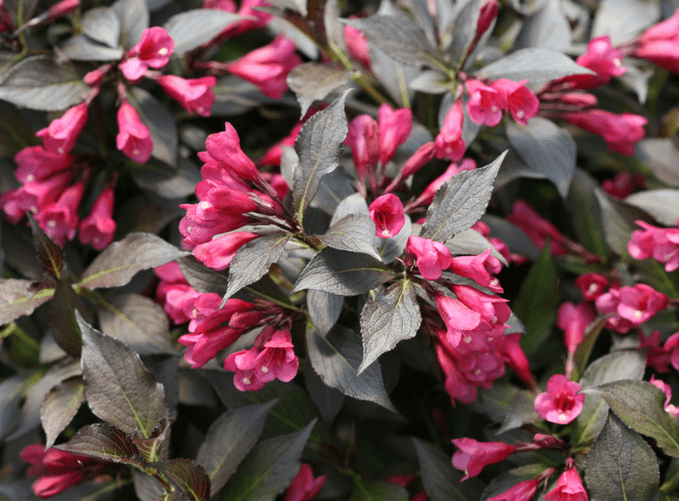Create a Year-Round Garden with Plants for All Seasons
Updated: Oct. 28, 2022
Follow these simple steps to create a garden filled with plants that offer beauty in all seasons.

Think Foliage Before Flowers
A plant’s greenery usually sticks around much longer than its blooms. Plan a plot primarily with foliage in mind, as garden designer Karen Chapman recommends in her co-authored book Gardening with Foliage First. She says, “If the foliage is gorgeous, you’re going to be happy immediately. Then layer flowers, berries and bark into that framework.”
Karen also suggests being open to different cultivars with distinct foliage. For example, if you like the way weigela’s spring flowers attract hummingbirds, she says, “Look for a variegated form or one with dark colored foliage.”
Stephanie Cohen, author of The Nonstop Garden, has an even simpler tip to try when shopping. “Put your hand over the flower,” she says. If you still like what you see when focusing just on the foliage, then buy it.
Build Up Structure
Annual beds look bleak in winter. Add an edge of low-growing junipers or a backdrop of broadleaf evergreens to help your flowers pop during the summer. In quieter winter gardens, these shrubs will have enough presence to stand on their own. And here’s how to grow your own Christmas tree!
Layer Waves of Color
A four-season garden doesn’t mean you have to stick to plants that look fantastic all year long. Not only will that limit your choices, but your garden may seem static and boring. Instead, try succession planting. This strategy blends plants beautifully from one season to the next and still allows for your favorite short-lived blooms.
One way to use succession planting is to grow new plants over any leftover foliage from your spring bulbs. Stephanie says, “Plant a few late-emerging perennials like daylilies over the bulbs. Take care not to dig too deeply, which would disturb them.”
Next, make note of any large blocks of annuals or perennials. In the fall, place spring bulbs between the plants. Plant these tulip bulbs in fall for spring blooms. Or, if space allows, add some shrubs for structure. Harry Lauder’s walking stick is a great choice for year-round interest.
Pick a Palette
The easiest way to create a cohesive look is to choose a color and repeat it through the seasons.
For example, you might start with orange Iceland poppies (Papaver nudicaule) for spring color, then allow Mango Tango hyssop to fill in the spot in summer. Nearby, add a plant with foliage that turns orange in fall, such as little bluestem grass (Schizachyrium scoparium). Finally, possumhaw holly (Ilex decidua) shows off in winter with bright orange-red berries. The hyssop, grass and holly all attract birds, too. Consider planting these perennial plants with year-round bird benefits.
Add Portable Inspiration
If you see bare spots now, containers are a quick fix. Here are the easiest plants to grow in containers. David Culp, author of A Year at Brandywine Cottage, uses pots filled with bold-leaved tropical plants to add structure in his Pennsylvania garden. He says, “If your garden is based on texture, it will hold together longer.” David suggests replanting the containers with seasonal colors and bloomers throughout the year. Buy smaller planters that can be moved easily to enhance spots that become bare or less interesting during certain seasons.
Here’s even more expert tips for late season gardening
Plan for a View
“In winter, I like to see the snow on the limbs of my trees—from a distance. As in, from inside my house,” David says. Be realistic: If you’re not planning on taking a ramble through the garden on cold days, grow plants with winter interest where you can view them from the window. Put the more lush plantings around outdoor seating areas for summer.
A four-season garden gives you the chance to discover the special joys of every month. With a little planning now, you can create a year-round sanctuary to enjoy with the birds and wildlife that share it with you.